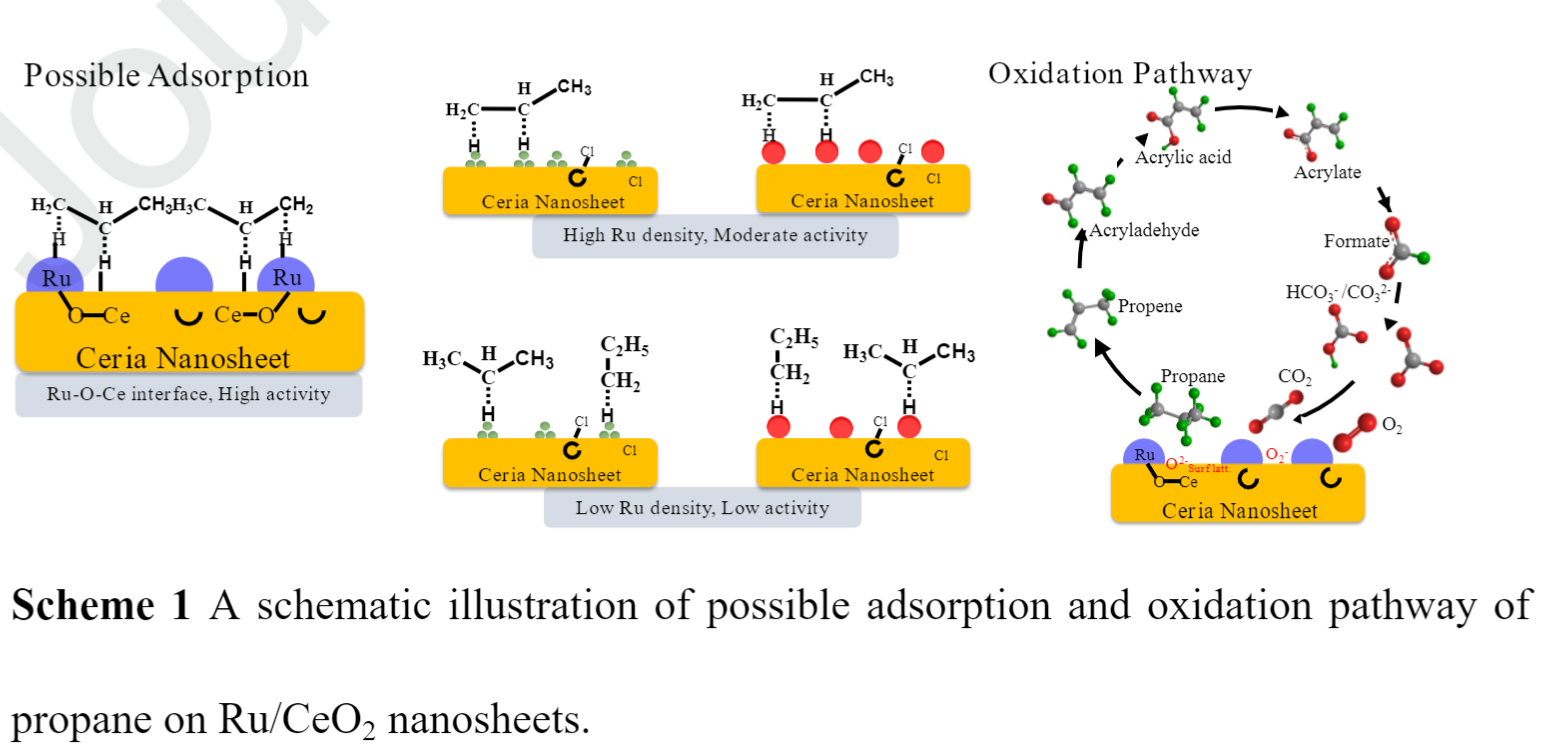博文
丙烷在Ru/CeO2上的催化燃烧发表于Chemical Engineering Journal
||
https://www.sciencedirect.com/science/article/pii/S1385894722010038
Abstract
Catalytic oxidation of propane as a representative molecule of light hydrocarbons (LHs) is of special interest for energy utilization and pollution abatement but is challengeable due to its stable C-H bonds. Here, Ru supported on porous and defect-rich CeO2 nanosheets catalysts were prepared and investigated for catalytic oxidation of propane, and the Ru/CeO2 catalyst using chlorine-free Ru precursor (RuN/CeNS) presented an ultra-high activity with complete conversion at 150 °C. A series of well-designed experiments and characterizations illustrated that the high-density and uniform Ru-O-Ce interfaces were determinant for propane oxidation due to the possible asymmetric bridged adsorption and activation. The presence of chlorine species suppressed the dispersion of RuOx species and the formation of Ru-O-Ce interfaces, which also accelerated the sintering of CeO2 and Ru-O-Ce interfaces at high temperatures. This work highlighted the experimental insights into the active interfacial sites of ultra-active Ru/CeO2 for propane oxidation. It contributed to an in-depth understanding of the activation of C-H bonds in LHs and the preparation of supported noble metal catalysts.



https://wap.sciencenet.cn/blog-3913-1327534.html
上一篇:[转载]ACS Catalysis专题介绍李灿院士,深耕催化领域!
下一篇:[转载]高熵合金催化剂浅谈